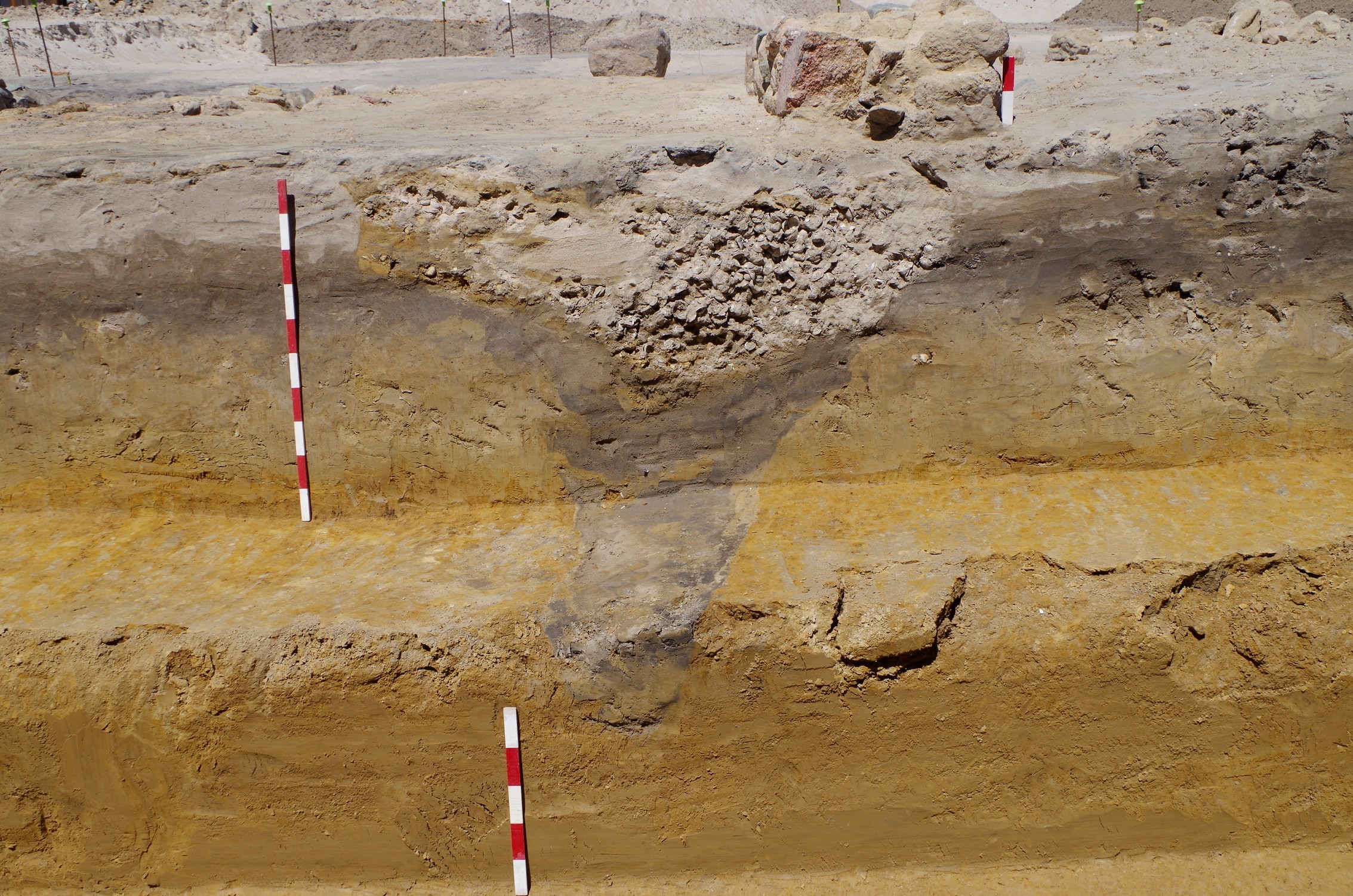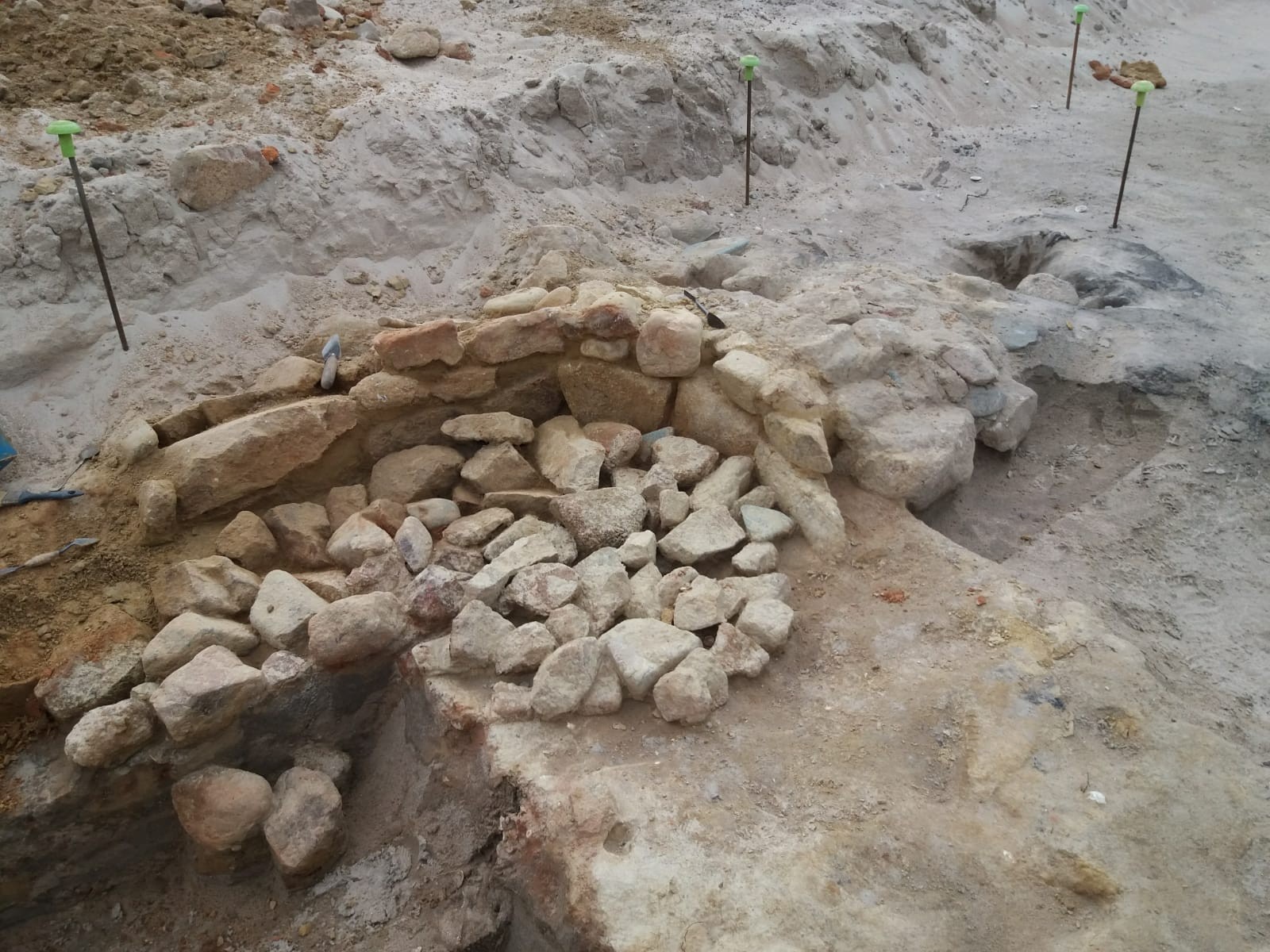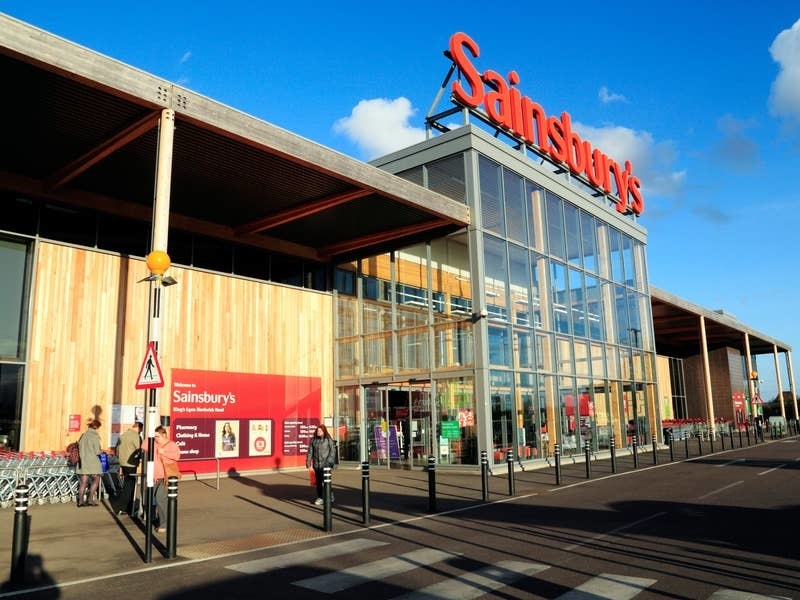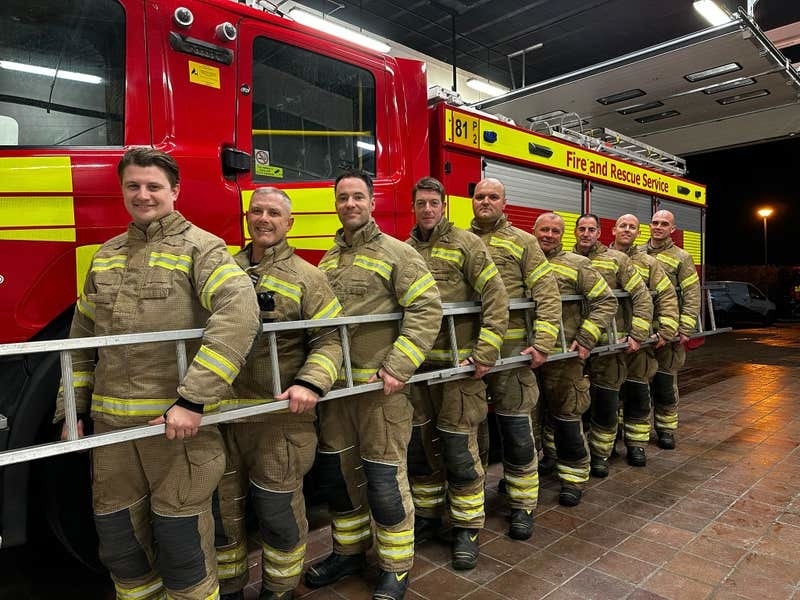A team from Wessex Archaeology, working alongside Jersey firms Sycamore Properties and Rok, made the discovery while undertaking investigations at The Waves development at Keppel Tower.
The archaeological excavations were required as a condition of the planning permission secured for the new development of flats on the site.
Planning permission was first applied for in 2013 after three years of site preparation. However, the application proved controversial because the site is located next to a listed cottage owned by Mary Herold, who eventually took the matter to the Royal Court and won her case. Various planning applications later, permission was finally granted and work started at the site.
Now members of the team have discovered the well-made walls of the workshop buried below more than a metre of wind-blown sand and a building which appears to be using a late prehistoric ditch as a foundation.
At the northern end of the structure – which can be dated by pottery finds to between the 12th and 14th centuries – are remains of an oven which appears to have been used for processing shellfish, especially limpets.

Darryl Freer, project officer for Wessex Archaeology, said: ‘Upstanding remains of this period are rare in Jersey and, with subsequent analysis, may give us a unique insight into the industrial processes and inter-tidal exploitation practices of the time.
‘The prehistoric remains were a surprise, as the footprint has been largely used as the foundation for the building, perhaps as it represented the most stable building conditions next to the shifting sands of the inter-tidal zone,’ he said.
Wessex Archaeology have used photogrammetry – where hundreds of individual photographs are knitted together to create a photo-realistic virtual 3D model – to record the building.
In addition, samples have been taken for later analysis which will help the archaeologists to better understand the nature of the industrial processes on site, with pollen recovered from the samples giving an insight into the wider environment, and monolith samples revealing details of soil formation.

The Government of Jersey’s principal planner for the Historic Environment, Tracey Ingle, said that interest in the site came from the presence of Keppel Tower which had generated the archaeological study.
‘The potential for archaeological interest was proven by earlier excavation, prior to demolition of the modern buildings. The current excavations were agreed within the car park footprint, allowing ongoing assessment of finds as the site levels within a protected and piled area were reduced,’ she said.
Jersey Heritage’s curator of archaeology Olga Finch said that the new find illustrated the many chapters that made up Jersey’s fascinating and diverse story, much of it still hidden in the landscape waiting to be discovered.

The artefacts and environmental samples recovered from the excavation will be taken back to Wessex Archaeology’s labs in Salisbury for analysis, as the archaeologists seek to further understand the nature of the industrial processes being undertaken on the site during the Middle Ages.






